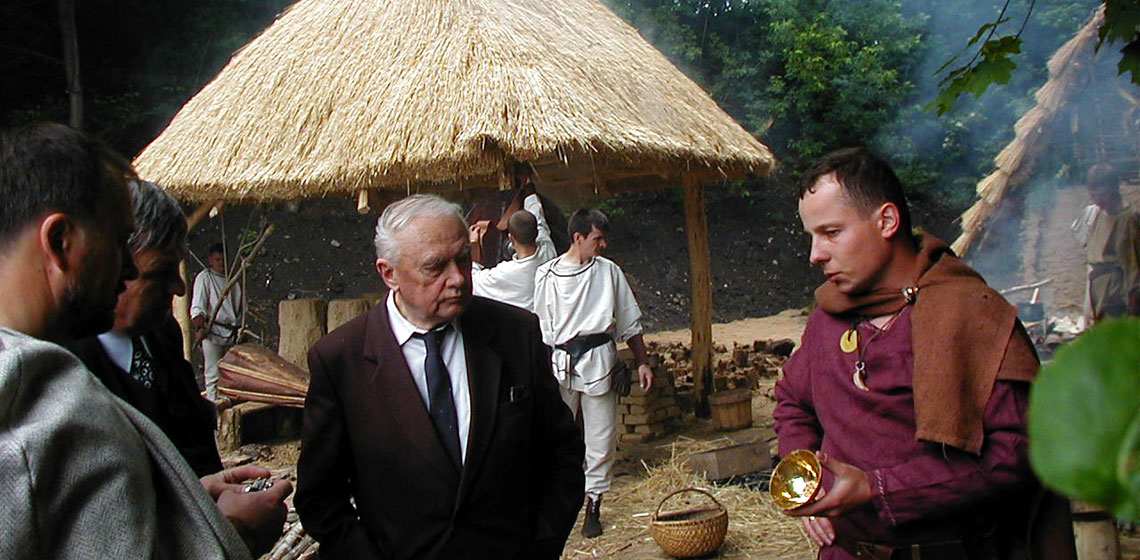iron
Did the Vikings have iron (NO)?
Yes, the Vikings had both iron and steel. They had to make it themselves, through a process called “blestring” or iron smelting. This was a major undertaking, so iron was expensive. Here at Lofotr we have documented this process on a DVD which is sold in our museum store.
Iron in the Iron Age, did that exist (NL)?
It is not for nothing called "Iron Age". The art of making iron originates - like many developments - from the Near East. In the Southern Netherlands, for tools and weapons, often wood and stone were used, occasionally bronze...
Where did the raw materials fot the medieval blacksmith come from and how did they get to him (NL)?
Probably, there were already tradesmen in iron and coal. Iron came form Germany, Sweden and the UK. Here there are locations where iron ore is found at the surface. Coal came from Germany...
You are cheating – they didn’t have iron axes in prehistory, did they (DK)?
No, not in the Stone Age. But here we are in the Iron Age. Do you remember the names of the periods: Stone Age, Bronze Age and Iron Age? You do not need to be embarrassed, but the names tell us when the different materials were introduced...
How did people make fire in the early Middle Ages (NL)?
Two methods were used to make fire. One was by striking a special piece of iron (strike-a-light) on a piece of flint. The other method is by friction of wood on wood. The strike-a-light was most common. Sometimes people used the back of a knife to strike sparks. Friction of wood on wood (“the old-fashioned way”) was used at religious occasions...
What contacts existed between the inhabitants of the lake fortress and other countries (LV)?
In the Early Middle Ages, active trading contacts developed in Latvia, also involving the inhabitants of the lake fortress. Imported jewellery and parts of weapons have been found in the cultural layer...
50th Anniversary of L’Anse aux Meadows, Newfoundland, Canada
The summer of 2010 saw the 50th anniversary of the discovery of the Viking Era site at L’Anse aux Meadows in Newfoundland Canada. To celebrate this milestone Parks Canada arranged a number of special events, including an August visit from the Dark Ages Re-creation Company (DARC)...
"But if you don't get any IRON..." Towards an Effective Method for Small Iron Smelting Furnaces
Building and operating a small bloomery iron furnace is certainly a wonderful public demonstration for any museum or living history site. It is however a complex technical process, with many individual factors combining for success. Over the last decade in North America, small teams of blacksmiths have developed predictable working methods through trial and much error. This direct practical experience can provide some insights into questions that even the best researched theories may not be able to solve.
Amgueddfa Cymru – St Fagans National History Museum (UK)
Located in the suburb of St Fagans to the North West of Cardiff, the museum was created in 1946 in the grounds of St Fagans Castle at an area of 100 hectares. Besides dozens of ethnographic (original) buildings, moved to the site, the museum has a reconstructed manor house in Elizabethan style and three Iron Age like roundhouses. St Fagans is one of Europe's leading open-air museums and has been voted the UK’s favourite tourist attraction.
Located to the northwest of Cardiff, the museum was created in 1946 in the grounds of St Fagans Castle. It features dozens of reconstructed buildings, brought from across Wales, and three Iron Age roundhouses based on...




